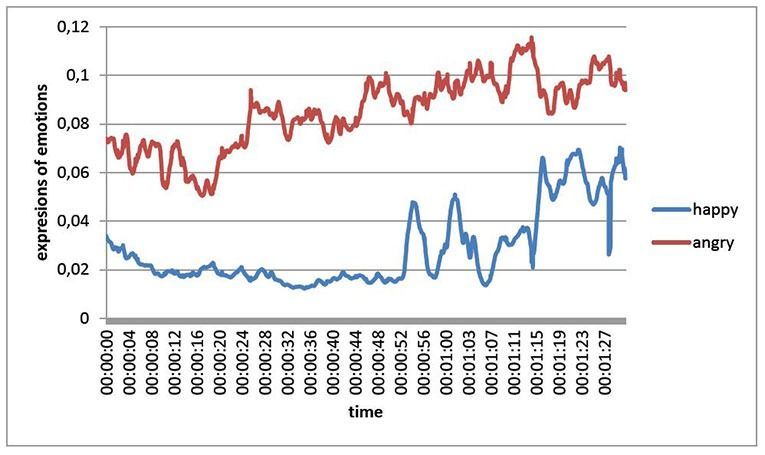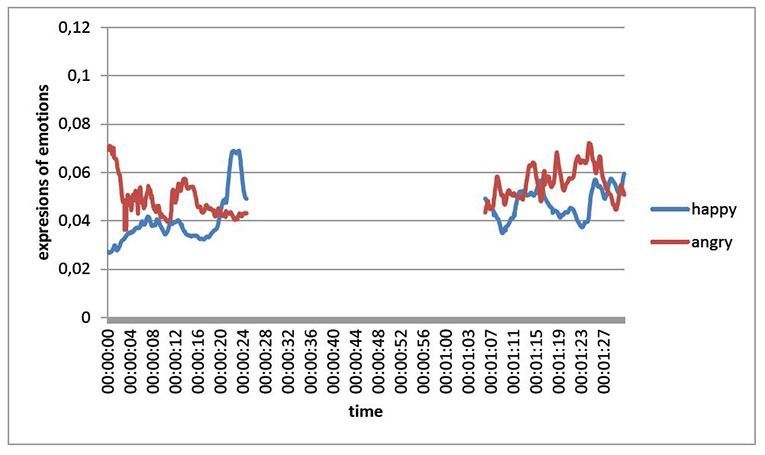The effects of negative campaigning on emotions
Do people display different emotions when they watch a commercial with or without negative campaigns? Sabine Dennert shares her findings in this guest blog post.
Posted by
Published on
Thu 25 Apr. 2019
Topics
| Addiction | Emotions | FaceReader | Facial Expression Analysis | Facial Expression Recognition Software |

This is a guest blog posted by Sabine Dennert. She studied at the Technical University Dresden in Germany and finished with a Master’s degree in communication science. The title of her Master Thesis is “Negative Campaigning in federal election. An experiment on the effects of campaigning on emotions and political attitudes based on FaceReader.”
The effects of negative campaigning on emotions
The main topic of my work was Negative Campaigning. Geer defines Negative Campaigning as “any criticism leveled by one candidate against another during a campaign. An appeal in a campaign either raises doubts about the opposition (i.e. negative) or states why the candidate is worthy of your vote (i.e. positive).” [1]
Political campaign commercials, including Negative Campaigning, can have a variety of effects on party supporters or opponents. In German-speaking regions, the influence of attacks within an advertising spot – one of the widest-reaching advertisement channels – to the recipient’s emotions and their political attitude isn’t well investigated yet [2].
The emotions of people watching the "Alternative für Deutschland" campaign commercial were investigated using the FaceReader facial expression reading software from Noldus Information Technology.
Emotional involvement allows voters to attach personal importance to their desired political issues. This allows them to have a stronger identification with their chosen political party [3] and suggests that party identification is influenced by emotion and acts as a crucial factor and mediator.
Measuring facial expressions while watching a commercial
This master thesis used FaceReader version 7.1. The investigation took place from August 29, 2018 to October 2, 2018 with 55 participants.
All participants were divided into two groups. Out of all the participants, 28 people received an edited commercial without "negative campaigning" while 27 people received the original "Negative Campaigning" commercial.
While watching the commercial, all participants were recorded using a camera. This recording was evaluated by the FaceReader software. Something that was very important for the study was the valence, or the emotional overall mood. It helps to provide information about how the two groups differed, and where the commercial had particularly positive or negative emotions.
Emotional analysis
With the help of the second-by-second emotional analysis, it was possible to determine the exact scenes where the highest eruptions of emotions were located.
For example, consider the average emotions "happy" and "angry" per frame in Figure 1 (with negative campaigning) and Figure 2 (without negative campaigning).

Figure 1. Curve of the emotions "happy" and "angry" during the AfD spot with Negative Campaigning scenes (from 00:00:25 - 00:01:04). The values correspond to the average values of all "happy" and "angry" rashes per frame in subjects with negative campaigning (N = 27).

Figure 2. Curve of the emotions "happy" and "angry" during the AfD spot without negative campaigning scenes (cut 00:00:25 - 00:01:04). The values correspond to the average values of all "happy" and "angry" rashes per frame in subjects with negative campaigning (N = 28).
Emotional mood influences political attitude
Based on the results, the thesis shows that political campaign attacks can have a strong psychological effect and could influence the emotional mood, even if in a negative way. For the party's opponents, it could be shown that the recognized attacks influenced emotional moods and also changed political attitudes.
References
- Geer, J. G. (2006). In defense of negativity. Chicago: University of Chicago Press. P. 23
- Schicha, C., & Skroblies, M. (2017). Politik im Spot-Format. regierungsforschung.de. P. 4
- Kießling, D., & Zolleis, U. (2005). Politische Werbung in modernen Wahlkampagnen. Die Politische Meinung (422). P. 47.
Related Posts

Behavioral coding: What and how

Improve the interaction between parent and child with autism

